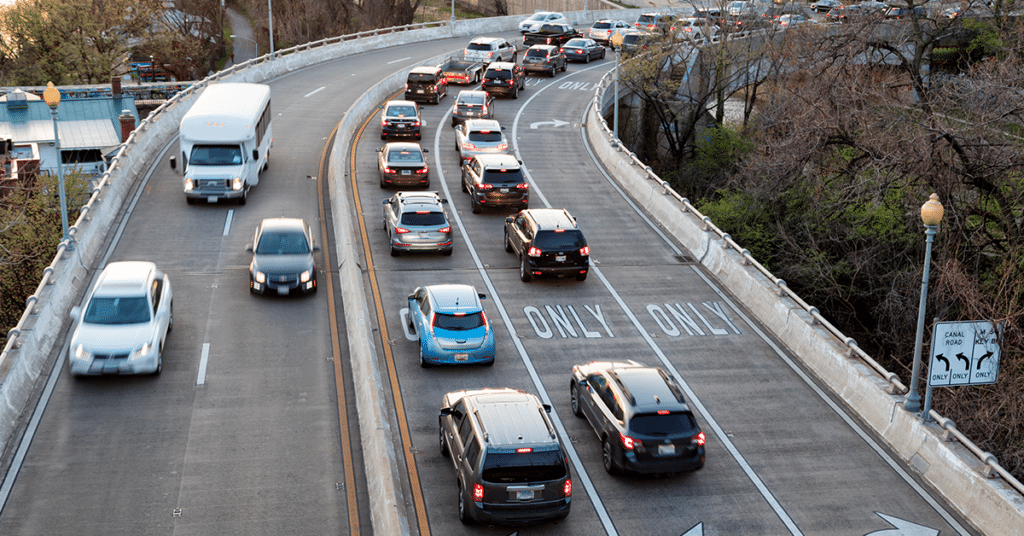The holiday season is retail’s make-or-break moment. Stores extend hours; inventory moves faster. And, field and regional managers are on the road more than ever: visiting multiple locations a day to ensure that shelves are stocked, that displays are perfect, and that teams have the support they need.
But, while managers are driving more, visiting more, and doing more, most retailers still lack one critical element: real-time visibility into what’s actually happening across their stores.
The Holiday Hustle: More Miles, More Pressure
From Black Friday through the new year, regional and district managers often log hundreds of additional miles each week. They’re visiting dozens of stores, troubleshooting staffing gaps, and solving last-minute operational challenges that simply can’t be handled remotely.
That’s the beauty — and the burden — of retail: success depends on showing up. But, at scale, showing up creates new challenges.
Without data, retailers don’t know:
- Which stores are getting the most on-site attention from field managers.
- How long those visits last, or whether time is being used effectively.
- Where inefficiencies are creeping in: excess driving time, unbalanced coverage, or overlapping routes.
And, this year, the pressure is even higher. Retail foot traffic has remained steady despite market uncertainty; visits were up 0.4% year-over-year in 2024, meaning that every store still counts.
It’s not about tracking people; it’s about understanding patterns that affect store performance.
Presence Drives Performance, but Data Drives Presence
Research continues to confirm that physical store presence drives performance. StoreForce Solutions reports that retail teams average 35 store visits per day, totaling more than 100 hours of concentrated field engagement, time that directly impacts customer experience and conversion.
Yet, many retailers rely on manual check-ins or calendar invites to understand where managers have been and what impact those visits made.
That’s where mobility data becomes a performance advantage.
Tools like Insights Pro, an advanced analytics solution from Motus, give retailers a clear view of how field managers spend their time on the road, which helps leaders balance workloads, identify high-performing regions, and ensure that every store gets the right level of support.
Turning Mobility into Measurable Impact
Modern retail leaders are increasingly using mobility data as a management tool, not just to monitor movement but to make smarter, faster decisions about people and performance.
Here’s how visibility through Insights Pro can transform the way field teams work during the busiest time of year.
-
Optimize Field Coverage
Insights Pro aggregates trip and visit data to show how managers are distributing their time across locations. Leaders can quickly spot gaps: stores that haven’t been visited recently or regions where managers may be stretched too thin.
RetailNext’s 2024 Executive Sessions found that leading retailers are increasingly using traffic and conversion data to guide staffing and store layout decisions. The same logic applies to field coverage: when you can see where your people spend time, you can deploy them more strategically.
This is especially critical when demand peaks. Let’s consider a hypothetical example (based on composite information): A large national specialty retailer discovered that 20% of its stores were receiving half as many field visits during peak weeks. By redistributing territories and balancing routes based on visit data, the brand increased its sales execution scores by 12% and reduced same-day travel costs by 9%.
Visibility turns field coverage into a measurable KPI, one that ensures every store gets the support it deserves, no matter how chaotic the season becomes.
-
Improve Operational Efficiency
Holiday schedules are a moving target. Managers are traveling longer distances, navigating weather, and covering for colleagues. Without clear data, these unpredictable variables quickly snowball into lost hours and unnecessary costs.
With Insights Pro, retailers can see how long managers are on the road versus in stores, revealing whether travel patterns align with priorities. If one manager spends 70% of their day driving while another spends most of theirs on-site, leaders can rebalance assignments to maximize in-store engagement.
This kind of optimization adds up:
- Over a six-week holiday period, rebalanced routing can save dozens of hours per manager.
- Fewer redundant trips mean less fatigue and greater focus when managers are in the stores.
- Shorter drive times often lead to more frequent but shorter, high-value check-ins, a best practice many top-performing retailers are adopting.
Consider that physical retail foot traffic grew about 0.4% YoY in 2024, which reinforces that in-store metrics remain critical. Efficiency during that time isn’t a luxury; it’s a competitive advantage.
-
Strengthen Accountability and Coaching
When mobility data becomes part of the management toolkit, it elevates accountability from anecdotal to actionable.
Regional directors can review visit frequency and duration at the store level, identify trends among top-performing managers, and use those insights for coaching. Rather than asking, “How many stores did you hit this week?” they can ask, “Which stores did you prioritize, and what did you see?”
It’s not about surveillance; it’s about structure. With Insights Pro, data provides the context for richer, more productive conversations.
For example:
- Managers consistently spending more time in underperforming stores might be applying best practices that others can emulate.
- If one region’s results improve following more consistent field presence, leaders can replicate the model elsewhere.
Data transforms performance reviews into collaboration sessions, not compliance checks. And, for multi-region retail organizations, such shared visibility builds alignment from the field to headquarters.
-
Connect Field Activity to Store Outcomes
Visibility doesn’t end with routes and visits. It’s about correlating those behaviors to business results. When mobility data is layered with sales, labor, or inventory metrics, retailers can see precisely how field activity drives outcomes. Lystloc’s 2024 report found that consistent field tracking correlates directly with sales uplift in retail organizations, particularly during seasonal peaks.
Imagine being able to pinpoint that stores receiving at least two field visits per week outperform others by 10% in seasonal sales or discovering that regions where managers spend longer in-store have lower turnover and stronger customer satisfaction scores.
Those connections reveal what’s truly moving the needle and empowering retailers to refine their playbooks in real time.
By translating mobility into measurable insights, retailers can react faster and make data-driven investments for the next season.
-
A More Agile Way to Manage the Season
Real-time insights turn what was once guesswork into a repeatable strategy. Retailers can:
- Reassign coverage dynamically based on store performance.
- Validate whether increased drive time equals better results.
- Identify which stores need more on-site attention and which can thrive with virtual support.
The holidays demand flexibility. With a clear, data-backed view of where teams are spending their time and where that time has the biggest impact, retailers can deliver consistency across every store, every region, every day.
Seeing the Season Differently
The holidays move fast. Decisions that used to take weeks need to happen in hours. Real-time data gives retailers the agility to adjust coverage, address problems, and celebrate wins before the season is over, not after.
And, because Motus processes millions of trips across the U.S. every day, Insights Pro doesn’t just report what’s happening; it reveals what’s working.
For retail organizations navigating the busiest stretch of the year, that means:
- Better visibility into how field teams are operating.
- Smarter allocation of time and travel resources.
- A stronger connection between mobility and business performance.
Even as e-commerce expands, StoreForce’s 2024 “State of Retail” report notes that physical retail remains robust, with foot traffic showing continued resilience across U.S. regions. The stores and the people who lead them still matter.
The Bottom Line
The holiday rush will always test retailers, but it doesn’t have to test their visibility. When managers are in motion, your brand is in motion. Understanding that motion — where, how often, and with what impact — can turn mobility from a logistical cost into a competitive advantage.
As the season ramps up, retailers who rely on data, not guesswork, will be the ones who close the year strong.
See how Insights Pro helps retail leaders understand and optimize field performance across every store; learn more or request a personalized overview.





